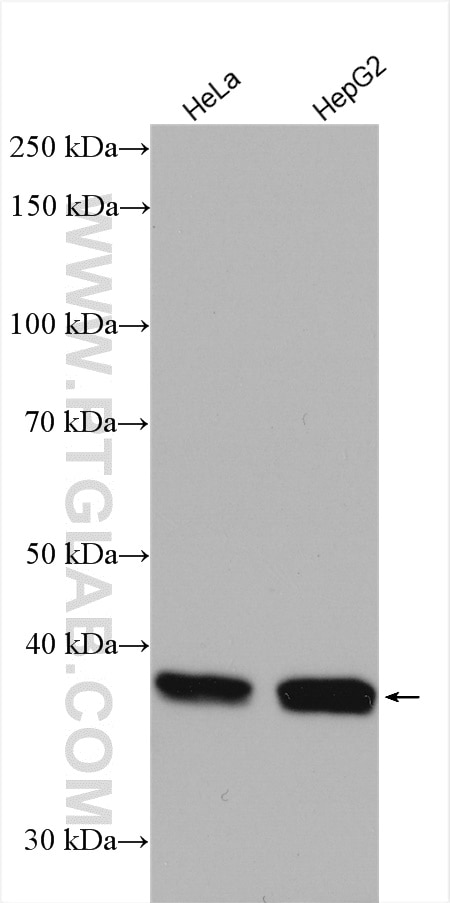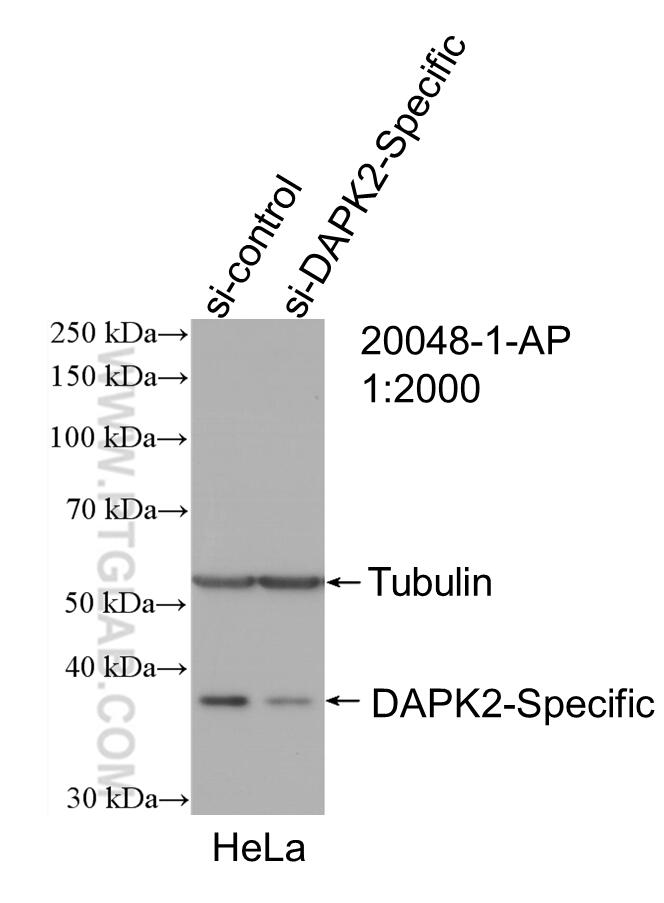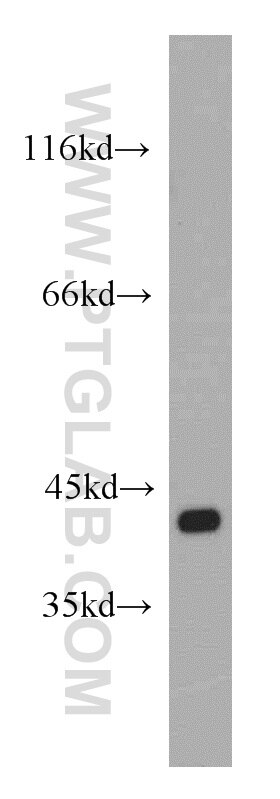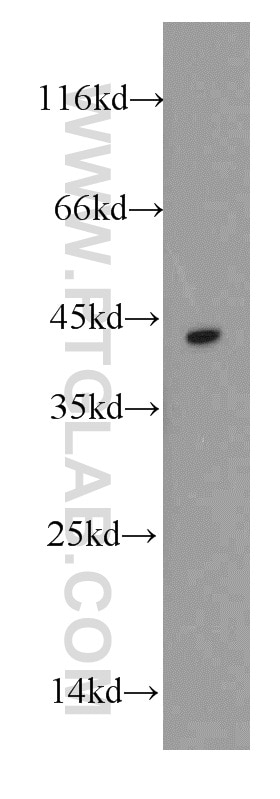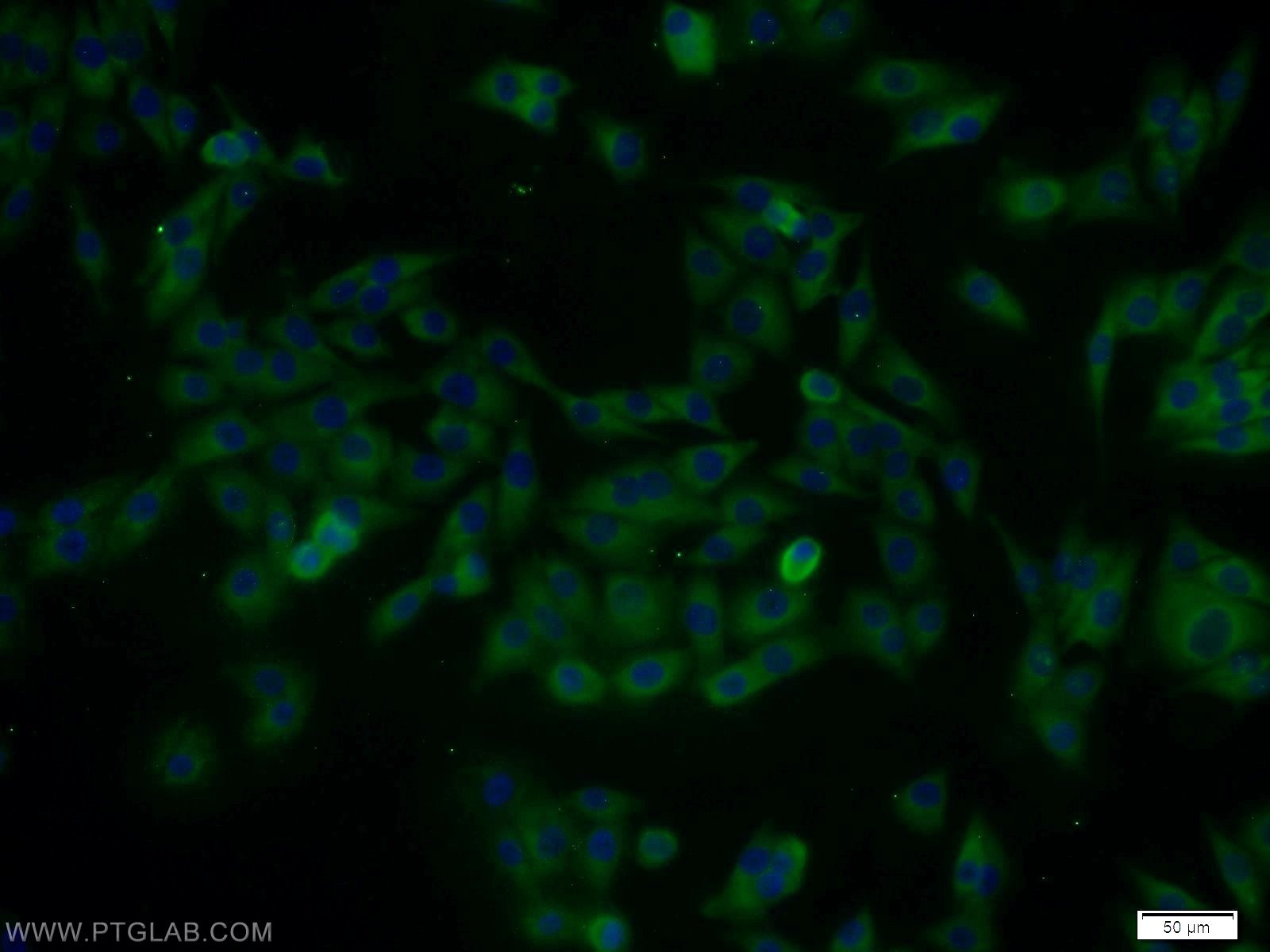- Featured Product
- KD/KO Validated
DAPK2-Specific Polyclonal antibody
DAPK2-Specific Polyclonal Antibody for IF, WB, ELISA
Host / Isotype
Rabbit / IgG
Reactivity
human, mouse
Applications
WB, IF, ELISA
Conjugate
Unconjugated
Cat no : 20048-1-AP
Synonyms
Validation Data Gallery
Tested Applications
| Positive WB detected in | HeLa cells, A431 cells, HepG2 cells |
| Positive IF detected in | A375 cells |
Recommended dilution
| Application | Dilution |
|---|---|
| Western Blot (WB) | WB : 1:1000-1:5000 |
| Immunofluorescence (IF) | IF : 1:10-1:100 |
| It is recommended that this reagent should be titrated in each testing system to obtain optimal results. | |
| Sample-dependent, Check data in validation data gallery. | |
Product Information
20048-1-AP targets DAPK2-Specific in WB, IF, ELISA applications and shows reactivity with human, mouse samples.
| Tested Reactivity | human, mouse |
| Host / Isotype | Rabbit / IgG |
| Class | Polyclonal |
| Type | Antibody |
| Immunogen | Peptide |
| Full Name | death-associated protein kinase 2 |
| Calculated Molecular Weight | 43 kDa |
| Observed Molecular Weight | 38-43 kDa |
| GenBank Accession Number | NM_014326 |
| Gene Symbol | DAPK2 |
| Gene ID (NCBI) | 23604 |
| RRID | AB_10667409 |
| Conjugate | Unconjugated |
| Form | Liquid |
| Purification Method | Antigen affinity purification |
| Storage Buffer | PBS with 0.02% sodium azide and 50% glycerol pH 7.3. |
| Storage Conditions | Store at -20°C. Stable for one year after shipment. Aliquoting is unnecessary for -20oC storage. 20ul sizes contain 0.1% BSA. |
Background Information
DAPK2, also named as DRP-1, belongs to the protein kinase superfamily, CAMK Ser/Thr protein kinase family and DAP kinase subfamily. DAPK2 is a calcium/calmodulin-dependent serine/threonine kinase which acts as a positive regulator of apoptosis. DAPK2 catalyzes the reaction: ATP + a protein = ADP + a phosphoprotein. The antibody is specific to DAPK2.
Protocols
| Product Specific Protocols | |
|---|---|
| WB protocol for DAPK2-Specific antibody 20048-1-AP | Download protocol |
| IF protocol for DAPK2-Specific antibody 20048-1-AP | Download protocol |
| Standard Protocols | |
|---|---|
| Click here to view our Standard Protocols |
